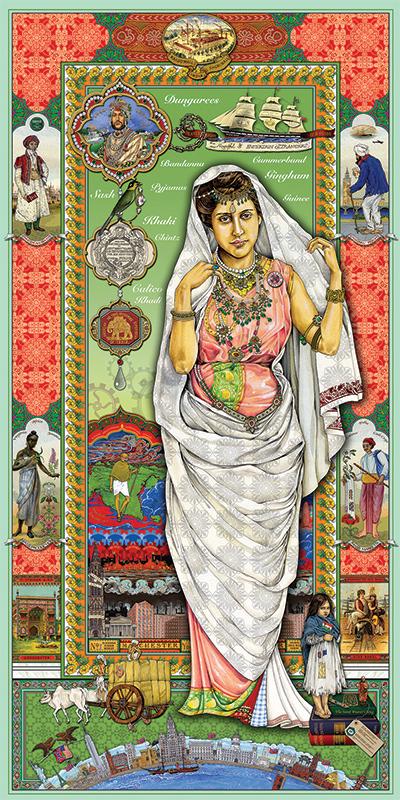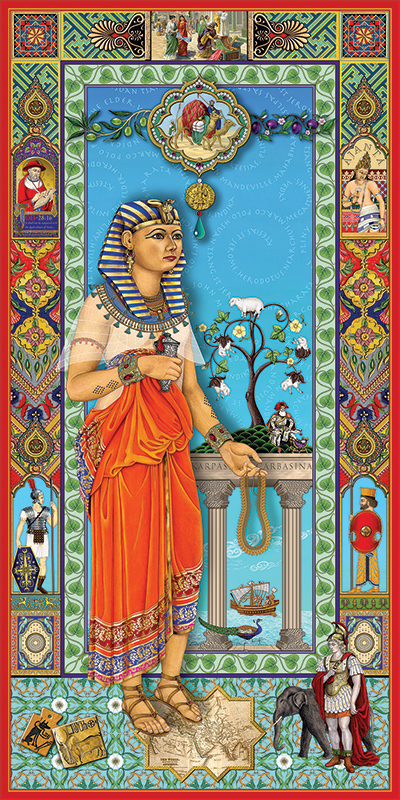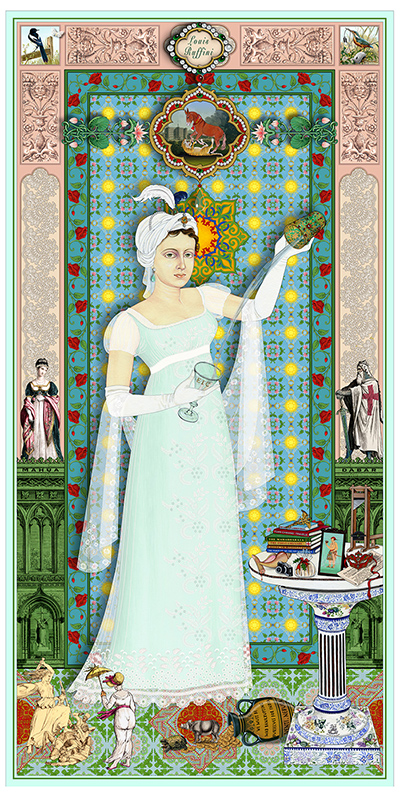Celebrating Sisters: The Singh Twins
The sisters have faced many challenges along the way to succeed in developing an international reputation for their art. Their own Indian heritage played a significant role in influencing their work, inspired by the ancient tradition of miniature painting. They combined traditional techniques with digital images in eleven of the artworks.


Pharaoh Hatshepsut in 'Ancient Roots: The Wonder that was India'
The central figure in the first artwork in the series 'Ancient Roots: The Wonder that was India' is Hatshepsut, Queen of Egypt. Hatshepsut was the first female ruler of ancient Egypt to reign as Pharaoh with full authority, which she did from 1479 BC to 1458 BC. I found this really interesting and was prompted to read more about her. I learned that in her statues she chose to be shown with the regalia of a male Pharaoh. She was a successful ruler, who built a temple at Karnak and sent daring trading expeditions to ‘The Land of Punt’ possibly present-day Yemen or Somalia. Hatshepsut was exceptional in wielding power in Ancient Egypt through the traditionally male role of Pharaoh.
Lady Mary Wortley-Montagu in 'Muslin: Fabric of Revolt'
The woman shown in the artwork 'Muslin: Fabric of Revolt' is Lady Mary Wortley-Montagu (1689-1762). Lady Mary was determined and independent-minded, and did not accept the social constraints on women at this period of British history. To escape an arranged marriage, she eloped with her husband Edward Wortley-Montague. He became British ambassador to the Ottoman Empire in Constantinople, modern day Istanbul in Turkey. It was there that she found out about methods of inoculating against the disfiguring and often deadly disease smallpox, which she herself had suffered. She later introduced to England this means of preventing it. She was best known as a brilliant writer, famous for her ‘Embassy Letters’ published after her death.

Princess Sophia Duleep Singh in 'Cotton: Threads of Change'
The woman in the picture is Princess Sophia Duleep Singh (1876-1948), youngest child of Maharaja Duleep Singh, the deposed ruler of the Punjab region of Northern India. Sophia was born and brought up in Britain. Goddaughter of Queen Victoria, as a young woman she lived the life of a wealthy socialite, enjoying aristocratic parties and breeding show dogs. After a trip to India in 1907, she became more politically active. She became a suffragette, joining the Women's Social and Political Union (WSPU), an organisation campaigning for votes for women with the slogan ‘deeds not words’. Sophia herself was up before the magistrates on several occasions for her militant actions and resisting the payment of taxes on the grounds of no taxation without representation. Talking about their inspiration for this artwork The Singh Twins said, "As women of British-Indian Sikh heritage ourselves, we felt personally connected to Sophia’s story and were particularly keen as artists to make sure that her contribution to the Suffragette cause did not remain a hidden history of one of the most important equal rights movements of the 20th century."

